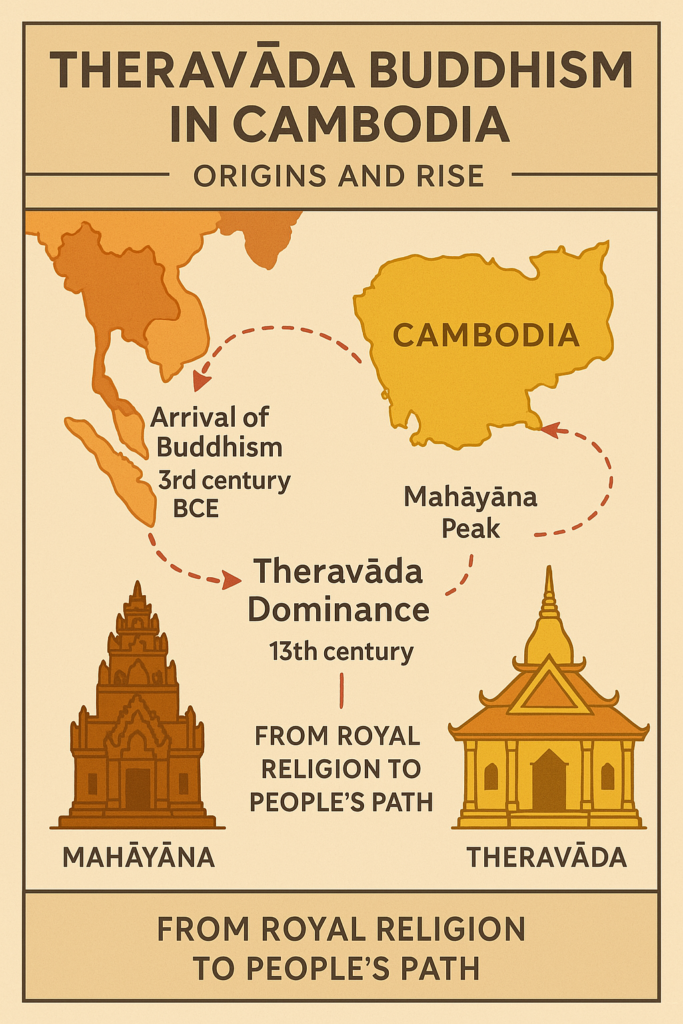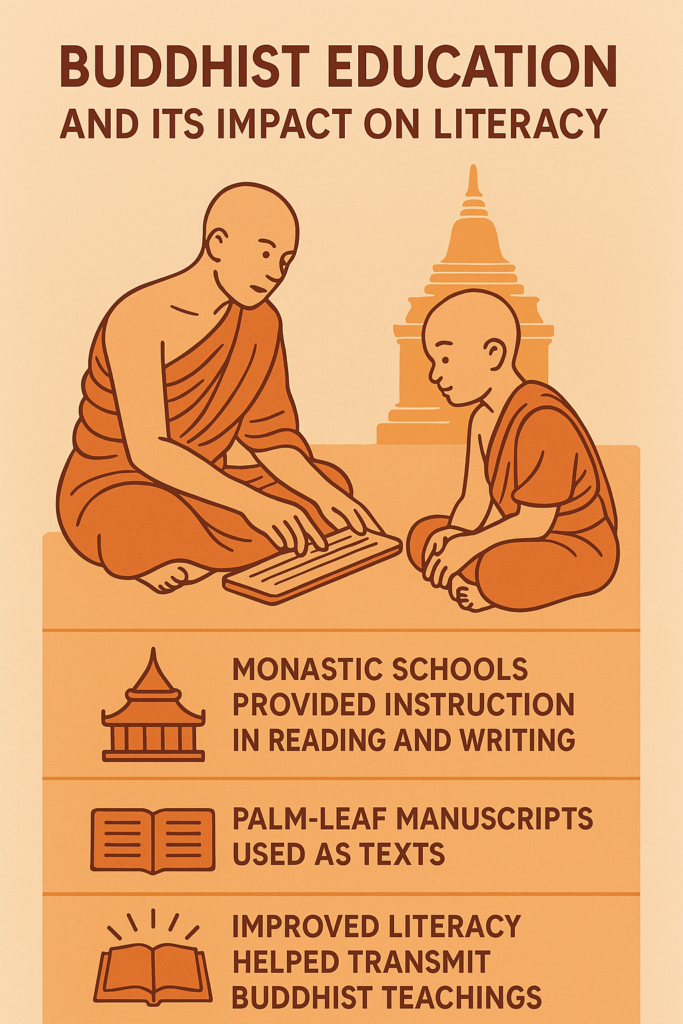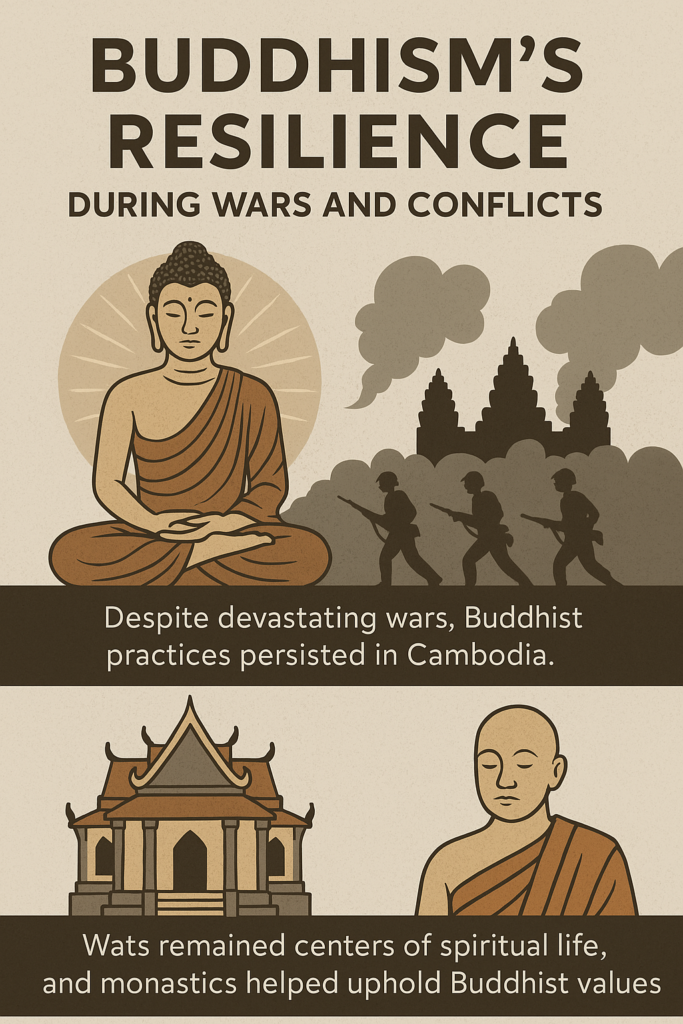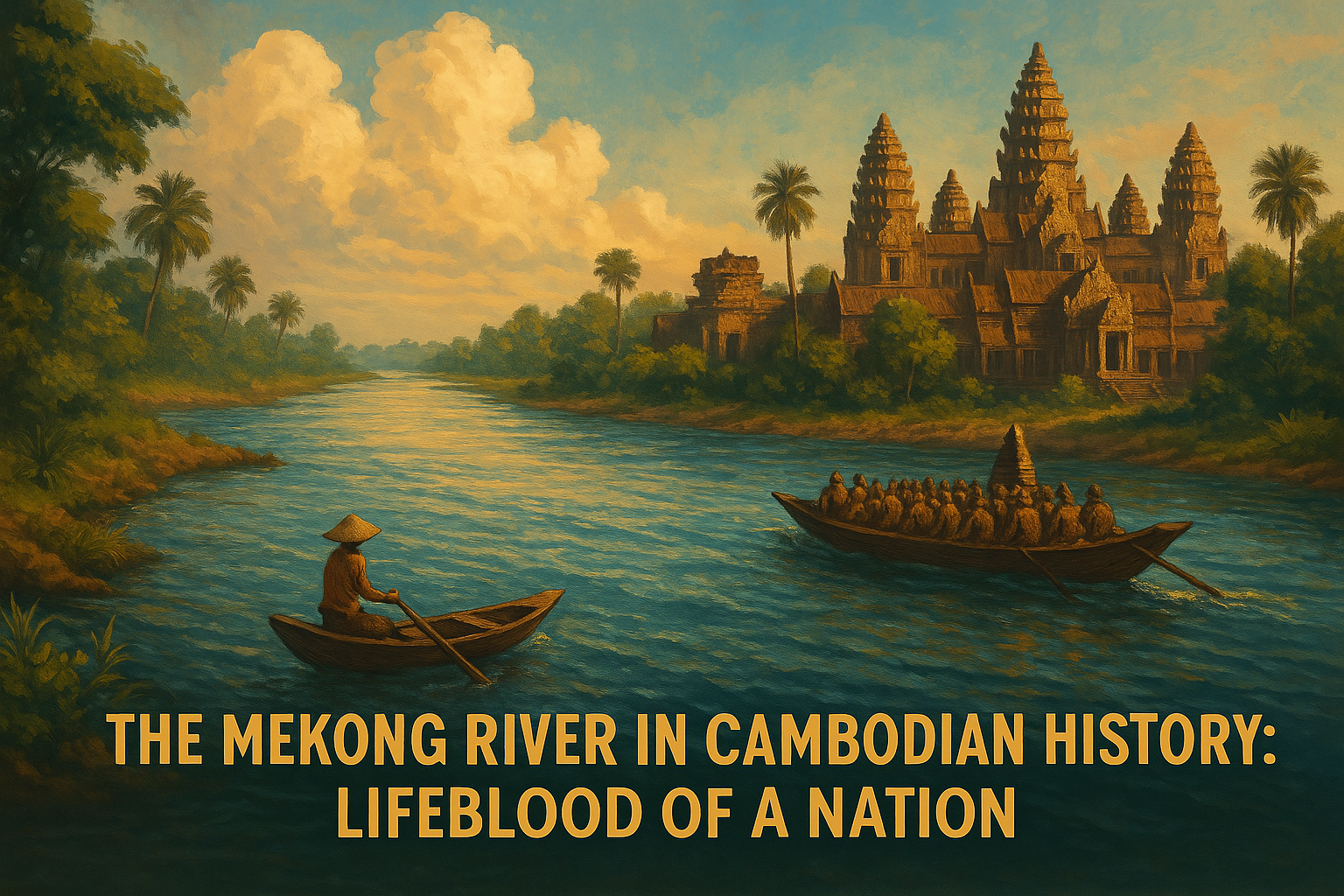Buddhism is more than a religion in Cambodia—it is a cultural foundation, a way of life, and the spiritual heartbeat of the Khmer people. For over a thousand years, Buddhism has influenced Cambodian politics, education, art, ethics, and community life. Even through colonization, civil war, and genocide, it has endured as a source of identity and resilience.
This article explores how Buddhism—particularly Theravāda Buddhism—has shaped Cambodian history, guided its people, and helped preserve the soul of the nation.
Early Adoption of Theravāda Buddhism in Cambodia

Buddhism likely arrived in Cambodia as early as the 3rd century BCE, via Indian traders and missionaries. However, it coexisted for centuries with Hinduism and Mahayāna Buddhism during the Khmer Empire. Many Khmer kings, like Jayavarman VII, practiced Mahayāna Buddhism while building iconic temples like Bayon, where Buddhist imagery is dominant.
It wasn’t until the 13th century that Theravāda Buddhism became the dominant faith. This shift was peaceful and widespread, aided by missionaries and monks from Sri Lanka and Burma. Unlike the hierarchical and ritual-heavy religions that preceded it, Theravāda Buddhism appealed to common people due to its simplicity and personal focus on enlightenment.
Theravāda teachings gradually became embedded in village life, replacing the royal-centered Hinduism with a more community-centered spiritual philosophy. Over time, Buddhism became inseparable from Cambodian identity.
The Influence of Buddhist Monks in Khmer Politics

Throughout history, Buddhist monks (bhikkhus) have played influential roles not only in spiritual life but also in politics and governance. Monks were often advisors to kings, moral critics of rulers, and educators to the public.
In the pre-modern era, monks were respected as guardians of both the Dharma and the national conscience. They had the power to legitimize royal authority or challenge it when rulers strayed from righteous paths.
During the colonial period, especially in the early 20th century, Buddhist monks became leaders in nationalist movements, using their moral authority to rally resistance against French cultural domination. Monks such as Ven. Hem Chieu inspired a new wave of activism that fused Buddhism with patriotism.
Even in the modern era, monks have occasionally taken part in political protest and reform, walking the line between spiritual leadership and social justice.
The Role of Temples and Pagodas in Khmer Society

Temples, known as wats or pagodas, are the spiritual and communal centers of Khmer life. Almost every village in Cambodia has a temple that serves multiple roles beyond religious worship.
Key roles of temples in Khmer society:
- Spiritual center for meditation, chanting, and religious holidays
- Educational hub where children learn basic literacy and moral teachings
- Cultural landmark preserving traditional architecture, painting, and sculpture
- Community gathering place for festivals, ceremonies, and conflict resolution
Pagodas are not only sacred spaces but also serve as the heart of village governance and social services. Major Buddhist festivals like Pchum Ben, Visak Bochea, and Khmer New Year are centered around temple life, reinforcing their centrality in cultural continuity.
Buddhist Education and Its Impact on Literacy

Before modern schools were established, temple-based education was the primary means of literacy and learning in Cambodia. For centuries, young boys would temporarily be ordained as novice monks and live in pagodas to receive instruction.
They learned:
- Pāli and Khmer scripts
- Religious texts and chanting
- Moral teachings (Dhamma)
- Basic mathematics and logic
This system helped create a literate male population, particularly in rural areas where formal schooling was unavailable. Even today, pagodas continue to offer free education to underprivileged youth, maintaining their historic role in knowledge transmission.
Monastic Life and Its Role in Preserving Khmer Culture

Monastic life has long been a bastion of Khmer cultural preservation. Monks safeguard ancient texts, maintain traditional rituals, and transmit oral and written histories.
Their contributions include:
- Preserving Khmer literature and folklore
- Recording chronicles of kings and events
- Conserving ritual music, dance, and ceremonies
- Teaching ethical values and social harmony
Monasteries often serve as living museums, housing ancient manuscripts, palm-leaf texts, and murals that depict moral tales or the Jātaka stories (Buddha’s past lives). Through daily rituals, monks pass on cultural behaviors tied to humility, generosity, and respect for elders.
Buddhism’s Resilience During Wars and Conflicts

Few institutions in Cambodia have endured as much turmoil as the Buddhist sangha (monastic community). During the Khmer Rouge regime (1975–1979), Buddhism was brutally suppressed. Monks were defrocked, pagodas were destroyed, and religious practice was banned. Over 50,000 monks were believed to have been killed or forced to flee.
Despite this devastation, Buddhism survived.
In the aftermath of the Khmer Rouge, temples were rebuilt, monks reordained, and a spiritual revival took place across Cambodia. Buddhism helped heal the national trauma, offering solace, guidance, and a return to moral foundations.
Today, Buddhism continues to be a powerful force for peacebuilding, reconciliation, and ethical guidance, particularly among communities still recovering from past conflicts.
Conclusion: The Living Spirit of Cambodia
Buddhism is not just a belief system in Cambodia—it is the moral compass, cultural cradle, and spiritual home of the Khmer people. It has guided the nation through its greatest achievements and its darkest hours, shaping how Cambodians see the world, treat each other, and understand life and death.
From royal temples to rural pagodas, from ancient manuscripts to daily alms rounds, Buddhism remains the living spirit of Cambodia—a tradition of compassion, mindfulness, and wisdom that continues to shape the nation’s soul.






Thanks for your sharing